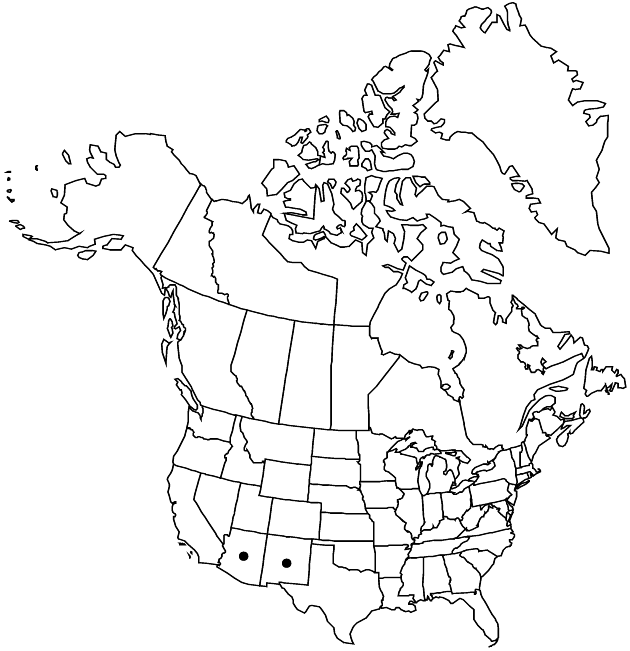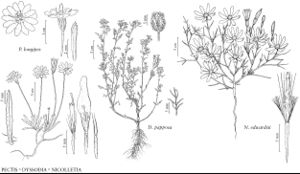Difference between revisions of "Pectis longipes"
Smithsonian Contr. Knowl. 5(6): 69. 1853.
FNA>Volume Importer |
FNA>Volume Importer |
||
| Line 49: | Line 49: | ||
|publication year=1853 | |publication year=1853 | ||
|special status= | |special status= | ||
| − | |source xml=https://jpend@bitbucket.org/aafc-mbb/fna-data-curation.git/src/ | + | |source xml=https://jpend@bitbucket.org/aafc-mbb/fna-data-curation.git/src/f6b125a955440c0872999024f038d74684f65921/coarse_grained_fna_xml/V19-20-21/V21_546.xml |
|tribe=Asteraceae tribe Heliantheae | |tribe=Asteraceae tribe Heliantheae | ||
|subtribe=Asteraceae (tribe Heliantheae) subtribe Pectidinae | |subtribe=Asteraceae (tribe Heliantheae) subtribe Pectidinae | ||
Revision as of 18:49, 24 September 2019
Perennials, 8–25 cm (rhizomes branched, 1–10 mm diam.); herbage lemon-scented or spicy-scented. Stems ascending to erect (very leafy), glabrous. Leaves linear to linear-oblanceolate, 10–55 × 1–3 mm, margins with 1–4 pairs of setae, faces glabrous (conspicuously dotted on margins with round oil-glands 0.3–0.5 mm). Heads borne singly. Peduncles (30–)50–160 mm. Involucres campanulate. Phyllaries distinct, linear, linear-oblanceolate, or linear-elliptic, 5–8 × 0.7–2 mm (dotted with 1–3, swollen, subterminal oil-glands 0.3–0.4 mm plus 1–3 pairs of narrow, submarginal oil-glands). Ray florets (8–)13(–15); corollas 8–12 mm. Disc florets 25–50; corollas 4–6 mm (2-lipped). Cypselae 2.5–4.5 mm, strigillose (hairs tips acute or blunt); ray pappi of 1–2 awns 3–3.5 mm; disc pappi of 2–30 unequal bristles 3–5 mm. 2n = 24, 48.
Phenology: Flowering Apr–Nov.
Habitat: Grasslands, oak-juniper-mesquite woodlands
Elevation: 900–1700 m
Distribution

Ariz., N.Mex., Mexico (Chihuahua, Durango, Sonora).
Discussion
Pectis longipes has been listed from Texas in floras; I have seen no collections from that state.
Pectis longipes comprises two cytological races. Diploid, spicy-scented plants occur throughout the range. In southern Arizona, the diploid race is broadly sympatric but locally allopatric with a tetraploid, lemon-scented race. The tetraploid race is nested within the range of the diploids. The races are easily separable by odor, and although they are very similar morphologically, they can be separated also by statistically significant differences in floral dimensions and pollen size (M. A. Luckow 1983). Based upon those minute differences, the type collection is diploid. Because the races are so similar morphologically and because so many of the specimens of P. longipes in herbaria bear no indication of odor, I chose not to give the cytological races formal recognition.
Selected References
None.
